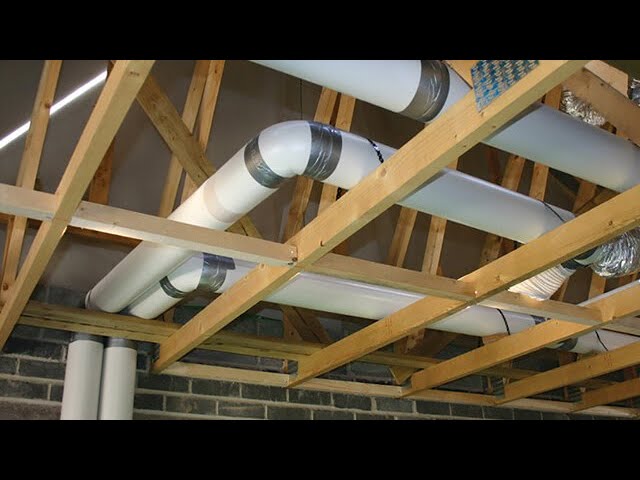In modern buildings, energy efficiency is becoming one of the key factors when designing a ventilation system. One of the most effective solutions is a ventilation system with heat recovery. This system not only provides a supply of fresh air, but also retains the heat that is usually lost with traditional ventilation. Let’s take a closer look at how does domestic MVHR work and its benefits.
The principle of heat recovery
Ecostream told us how this system works. The main idea behind heat recovery is to use the heat from the outgoing air to heat the incoming air. In most buildings, fresh air is brought in from outside and warm, stale air is exhausted. In a heat recovery ventilation system, however, there is a special heat exchanger that allows these two airflows to interact without mixing.
As cold, fresh air enters the building, it passes through the heat exchanger, where it is warmed by the heat extracted from the exhaust air. This significantly reduces energy losses for heating in winter or cooling in summer.
Benefits Of Using A Heat Recovery/ The Recuperator
Heat recovery offers:
- Energy efficiency. The system can retain up to 90% of the heat that would normally be lost through ventilation, reducing the need for additional heating.
- Comfortable indoor climate. By maintaining an optimum air temperature without sudden changes, it creates a more comfortable environment.
- Fresh air. The continuous supply of fresh air has a positive effect on the health of occupants and the productivity of office workers.
- Reduced load on air conditioning systems. As the system helps to maintain the optimum temperature, the need for intensive use of air conditioning and heating systems is reduced, extending their life.
Key elements of a heat recovery ventilation system
A heat recovery ventilation system consists of several key components that ensure its efficient operation:
- Heat exchanger. The core component that transfers heat between airflows. It can be either a plate or rotary heat exchanger.
- Fans. These are responsible for circulating air through the system. Some fans extract stale air, while others draw in fresh air.
- Filters. These ensure that the air is cleaned of dust and other contaminants to maintain good indoor air quality.
- Control system. Modern systems are equipped with automatic controls that adjust ventilation intensity and heat transfer according to outdoor conditions and indoor requirements.
Benefits of heat recover:
- Reduced heating and cooling costs
- Continuous supply of fresh air
- Maintenance of optimum humidity levels
- Reduced CO2 emissions and an environmentally friendly approach
- Increased indoor comfort
Heat recovery units require proper design and installation. This is where the professionals come in — companies that specialise in ventilation systems. The calculation of the required characteristics of the recuperator is carried out taking into account the area and purpose of the room.










 /home/u448362301/domains/theexpotab.com/public_html/wp-content/themes/foxiz/templates/popup.php on line 167
/home/u448362301/domains/theexpotab.com/public_html/wp-content/themes/foxiz/templates/popup.php on line 167